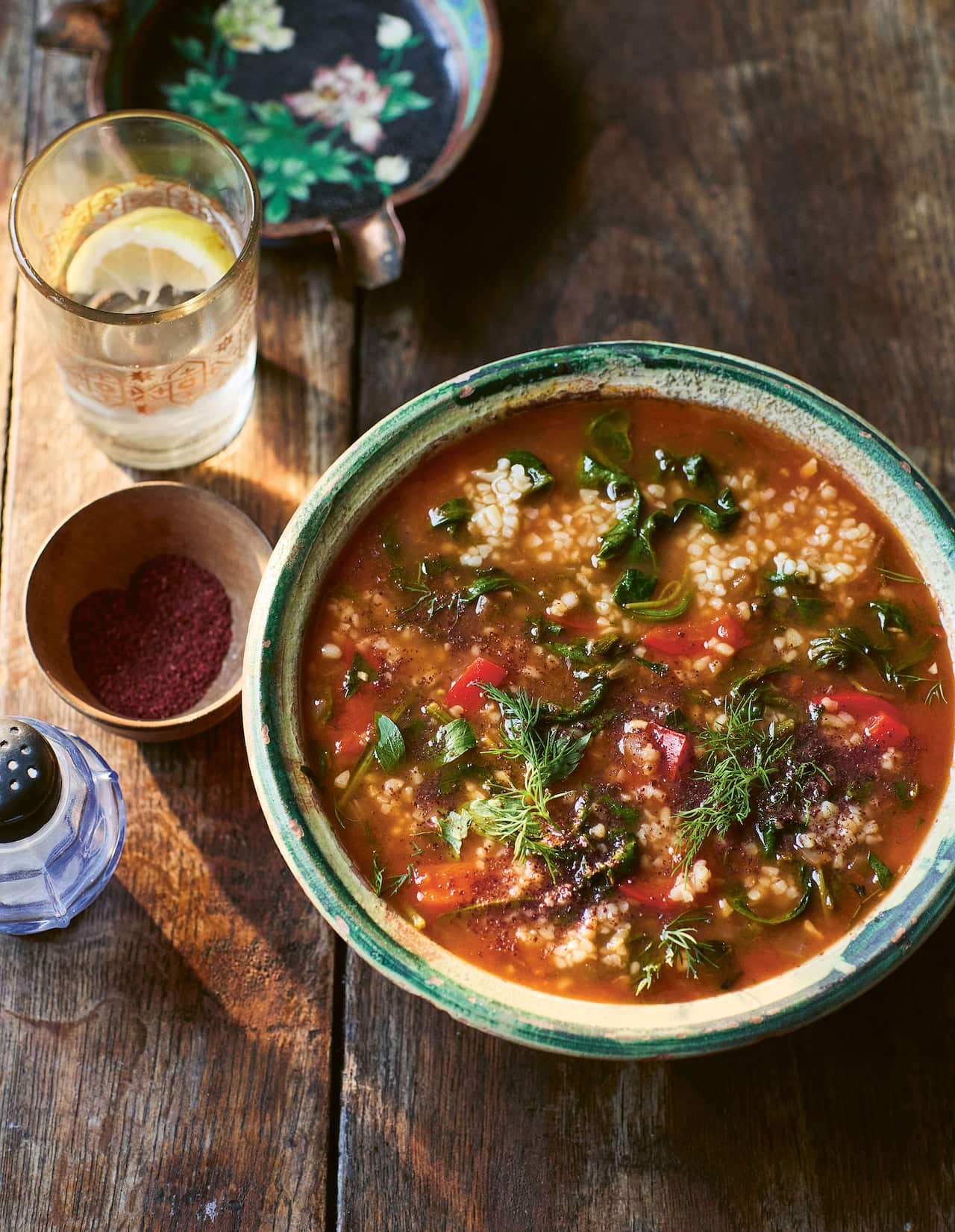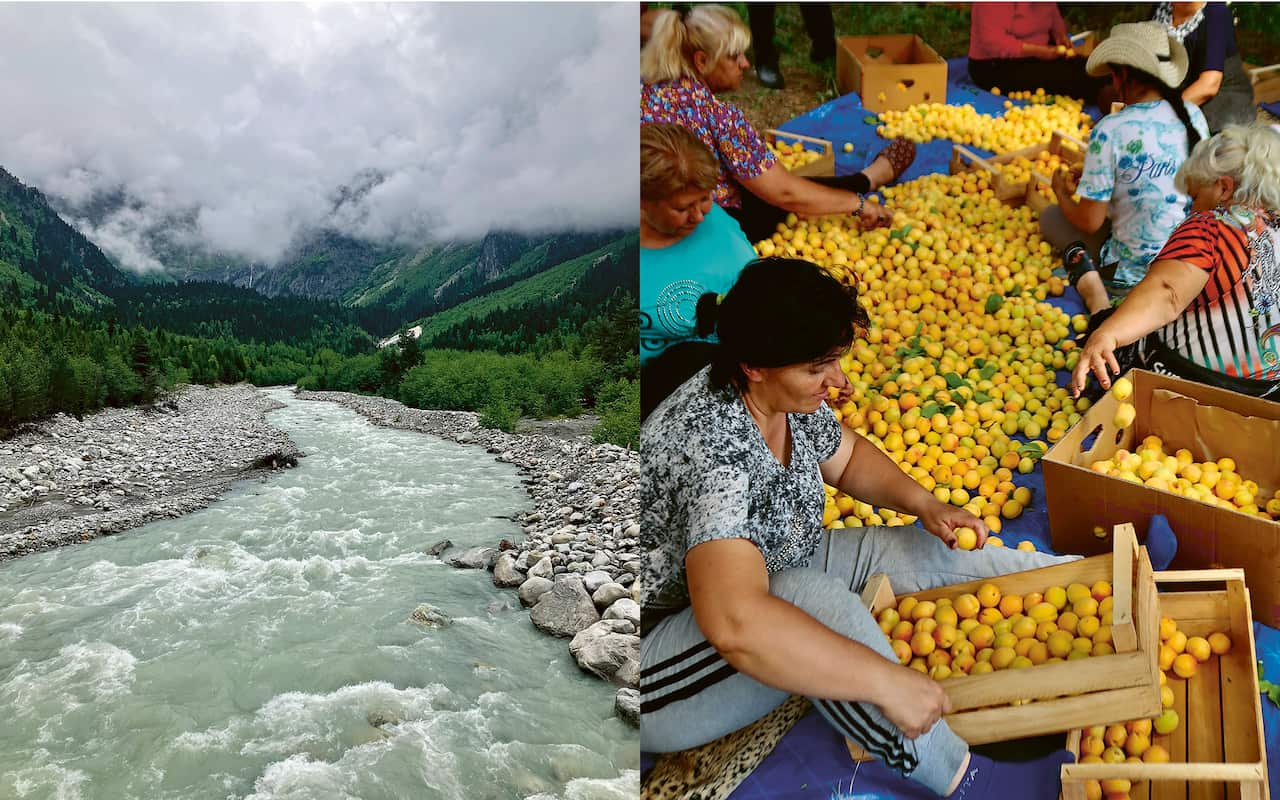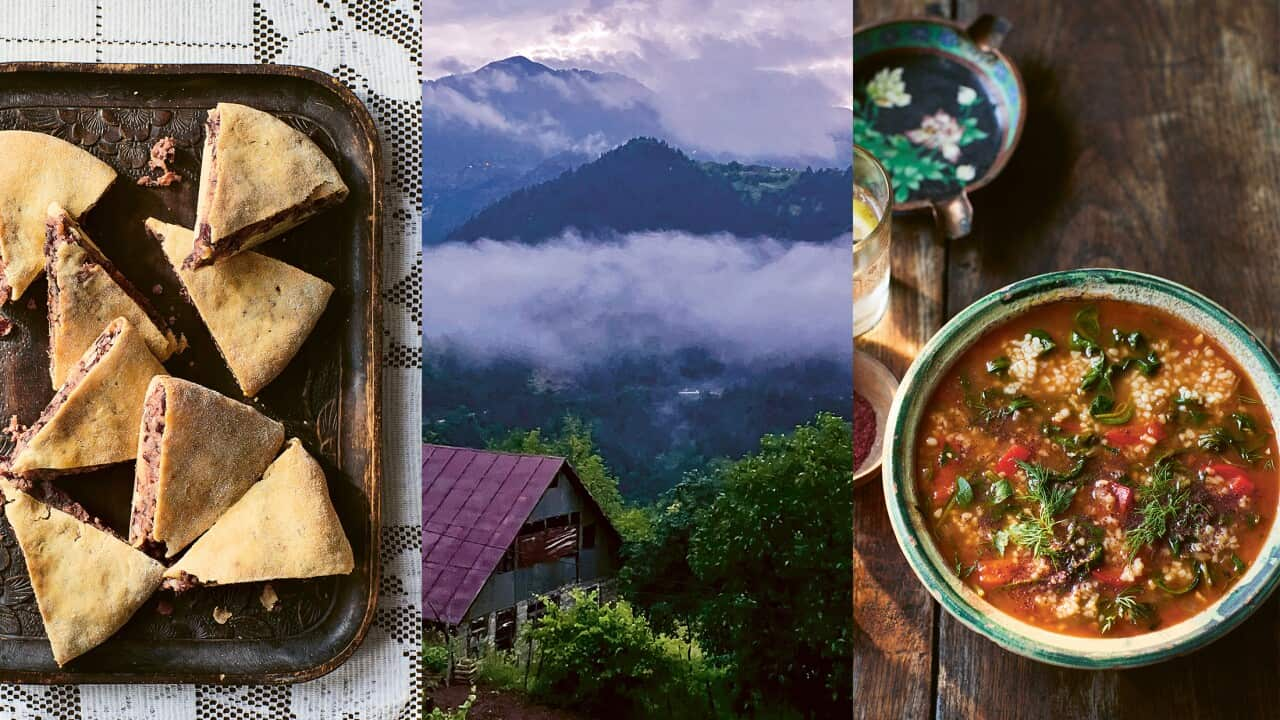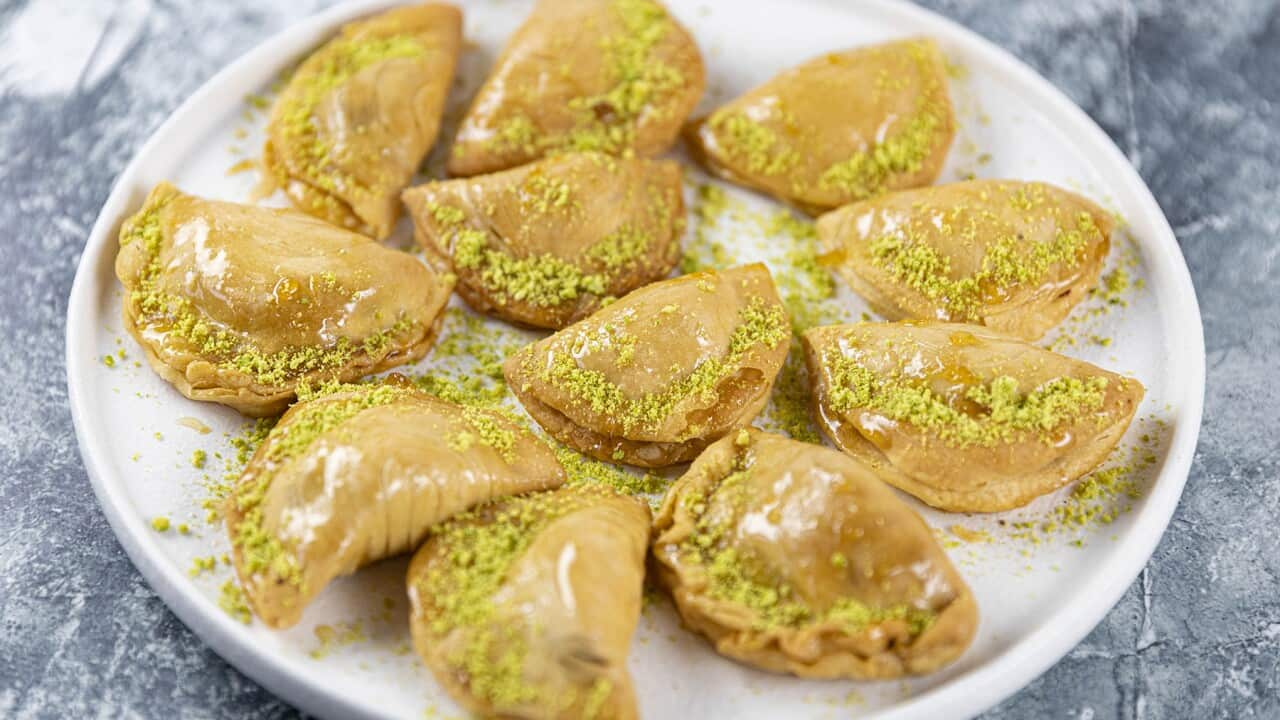As an outsider, by walking, you immediately become part of the scenery. By not shutting yourself away from the world, in the body of a car or bus, you make yourself vulnerable, approachable and more open to encounters.
Walking offers the best chance to relish the smells, sights and tastes, all of the sensory things that make up the fabric of a place. By hopefully stepping out, and by putting my trust in walking, I had faith that a certain human, animal, botanical, and edible portrait of Armenia and Georgia would form. Whether walking into mountain valleys, or through towns and cities, I’d carry with me confidence in the path ahead, and optimism for the weather, the map and good health.
To paraphrase the writer Iain Sinclair, who famously tramped London’s peripheries: walking sews it all together.
Footsteps to flavours
Food is woven through these on-foot adventures because of a very simple idea: the fact that no meal – literally no meal – can compete with what is served to you after a long walk. The deep, primeval happiness and comfort that comes from a bowl of beans or soup (such as the kitchen garden soup I ate in Armenia) or roasted meat or grilled fish that arrives at the table where you have finally sat down, is one of the very most satisfying and pleasurable things in life.

Mary’s kitchen garden soup. Credit: Ola O. Smit / Hardie Grant Books
And there is the bond, too, the relationship with your host who is feeding you, and the thankfulness you feel towards them. The straightforward, yet intense, pleasure of eating hard-earned food that has been thoughtfully prepared by a cook. A happy exchange. Footsteps to flavours, travelling towards sustenance. A moment when even the most rudimentary of meals becomes a satisfying and cherished banquet.
Yes, the post-walk meal, and all the physical and emotional factors that come with it, is something that truly does make life, even at the hardest junctures, worth living for.
The cult of the kitchen
And where better in the world to test this uncomplicated philosophy than Armenia and Georgia? Not only do both countries offer world-class hiking but the cult of the kitchen exists absolutely everywhere.
These are lands where the cook’s hands are gifted with abundance: ancient wheat varieties, gardens filled with mandarins, gorges tangled with wild unknowable herbs and sheep in the valleys. Wineries to rival any you can name. The moreish juice of sweet grapes and yellow plums, the soft flesh of strawberries and apricots suspended in jam. Magical cheeses. Mountain summertime greens that have no name in English as they grow only there.
The coastline, in Georgia, is an open-air Black Sea hothouse bursting with citrus, tea, tobacco, bamboo, cork trees and eucalyptus. And far and wide, all manner of things are busily minced and cubed and stuffed and ground and pitted and dried in the sun to be preserved for winter. These are the lands where, a local proverb goes, ‘A man only has to spit on the ground for an orange to grow.’

A river in the Svaneti region of Georgia, left, and women sorting fruit in Armenia. Credit: Quadrille / Caroline Eden
The Syrian and Lebanese influence on Armenia’s restaurant scene – brought about by the arrival of ethnic Armenians from those countries – was less known to me before arriving, and it was greatly appealing. And while Georgia’s wine industry is far more developed, Armenia also has stupendous wines, ready to be more widely discovered.

Lobiani (Buttery bean bread). Credit: Ola O. Smit / Hardie Grant Books
This is an edited extract from Green Mountains by Caroline Eden, published by Quadrille. Photography by Caroline Eden, Ola O. Smit and others.
Share
SBS Food is a 24/7 foodie channel for all Australians, with a focus on simple, authentic and everyday food inspiration from cultures everywhere. NSW stream only. Read more about SBS Food








